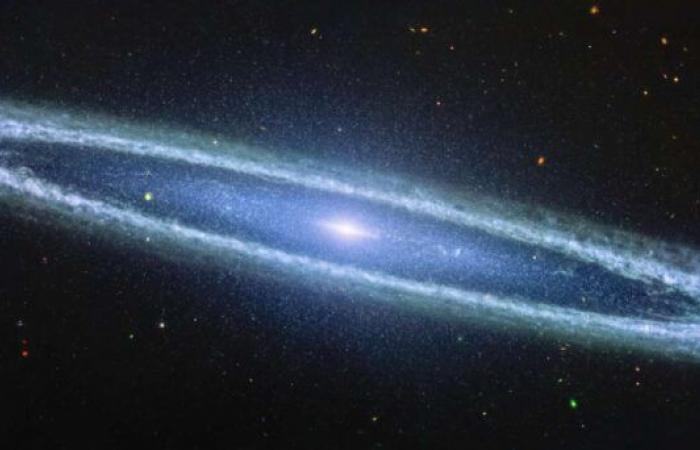
The Sombrero galaxy, located about 30 million light years from the Milky Way, towards the constellation Virgo, is an iconic galaxy among those imaged by the Hubble telescope. THE astronomersastronomers amateurs can contemplate it with an eVscope, but it was discovered by the French astronomer Pierre Méchain who, with his friend Charles MessierCharles Messieris one of those who discovered the most deep sky objects before William HerschelWilliam Herschel. Messier also mentions it in his famous catalog of nebulaenebulae where nowadays it is listed as Messier 104 (M104).
A schizophrenic galaxy between spiral and elliptical
It is a somewhat atypical galaxy because even if it appears as a disk with a bulge and although it is sometimes described as a galaxy spiralgalaxy spiralthe characteristics of its halo, revealed by the telescope SpitzerSpitzer in theinfraredinfraredbring it closer to elliptical galaxieselliptical galaxies. Its bulb contains in any case a supermassive black holesupermassive black hole of a billion massesmasses solar and it was discovered in the early 1990s with Hubble by determining the movementsmovements d’starsstars in this bulb, a method also used to discover and weigh the central black hole of our Galaxy which only contains a little more than 4 million solar masses.
Today, new mid-infrared images were taken with the instrument MiriMiri (Mid-Infrared Instrument) of télescope spatial James-Webbtélescope spatial James-Webb which enrich our knowledge of M104, complementing the data already obtained from other wavelengthswavelengths and to a resolutionresolution different by Hubble and Spitzer.
This video takes the viewer on a journey through space to the Sombrero Galaxy. © NASA, ESA, CSA, STScI, ESO/IDA/Danish 1.5 m, DSS 2, The Hubble Heritage Team (STScI/AURA), N. Bartmann (ESA/Webb), R. Gendler and J.-E. Ovaldsen, E. Slawik, N. Risinger and M. Zamani (ESA/Webb)
A laboratory for the theory of stellar evolution
The outer ring of the Sombrero Galaxy appears for the first time with complex clusters, revealing new details about the distribution of dust. Miri also now detects the presence ofaromatic hydrocarbonsaromatic hydrocarbons polycyclics that can betray the presence of regions of new star formation.
This is, however, less active than in the case of the Milky Way where the formation rate is around two solar masses per year compared to less than one in M104 and 10 in Messier 82 (NGCNGC 3034, also known as Cigar GalaxyCigar Galaxy).
This video compares images of the Sombrero Galaxy. The first image is in infrared light and was captured by the Spitzer Space Telescope. The second image shows the galaxy observed in mid-infrared by the Webb Space Telescope using the Miri instrument (Mid-Infrared Instrument). The last image shows visible light observed by the Advanced Camera for Hubble Space Telescope surveys. © NASA, ESA, CSA, IPAC, STScI
A press release from the NasaNasa explain : ” Also within the Sombrero Galaxy are some 2,000 globular clusters, a collection of hundreds of thousands of ancient stars held together by gravitygravity. This type of system serves as a pseudo-laboratory for astronomers to study stars – thousands of stars within a single system having the same age, but different masses and other properties, providing an opportunity for comparative studies. »





